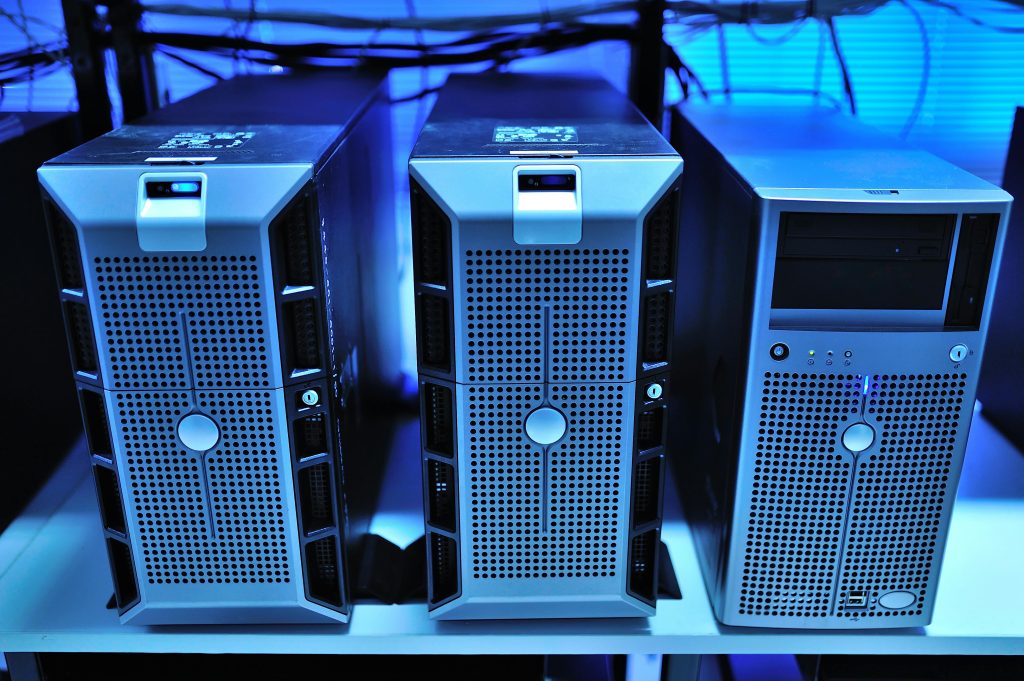In this era of global digital transformation, enterprise IT systems have become the “nervous system” of business operations. The hardware supporting these systems, particularly servers, is akin to the foundation of a building—directly impacting the stability, performance, and long-term sustainability of the enterprise’s information systems. Today, let’s explore how to select and configure server hardware based on real-world enterprise needs.

Types of Servers and Their Applications
Enterprise servers are generally categorized into three main types, each with distinct characteristics. Choosing the right type depends on specific needs.
- Rack-mounted Servers
Rack-mounted servers are the most common choice, known for their standardization and cost-effectiveness, making them ideal for large-scale data centers. For instance, an internet company deployed over 10,000 42U rack-mounted servers, significantly improving space utilization and hardware management efficiency. - Tower Servers
Tower servers are more suitable for small businesses or branch offices, particularly in environments where low noise and easy mobility are important. For example, a retail enterprise deployed tower servers in over 400 stores. While the scale wasn’t large, it was more than sufficient for local data processing needs. - Blade Servers
Blade servers are highly integrated and particularly suited for enterprises requiring high-density computing resources. A cloud service provider enhanced its data center’s power density by over 30kW using blade servers, greatly improving resource utilization in a limited space.
Core Hardware Configuration Strategy
Once the server type is selected, the next step is configuring the hardware. Since every enterprise has different needs, the configuration must be tailored accordingly.
- Processor Selection
In today’s multi-core era, processor choice should depend on the application’s requirements. For example, a financial institution’s trading system uses a 48-core high-frequency processor with a clock speed of 3.0 GHz, paired with a large cache, to handle high-frequency transactions—this is a “fighter jet” level configuration. - Memory Configuration
Balancing memory capacity and performance is critical. If the CPU is the “brain,” memory is the “workbench” of that brain. For example, an e-commerce platform’s database server uses 8-channel DDR4 memory with a total capacity of 2TB, ensuring quick access to large-scale data. Additionally, using ECC (Error-Correcting Code) memory effectively prevents data corruption and improves stability. - Storage Solutions
Storage systems must balance performance, capacity, and cost for optimal results. For instance, a video service provider uses a tiered storage architecture: hot data is stored on NVMe SSDs for top-tier performance, warm data on SATA SSDs for better cost efficiency, and cold data on HDDs for large capacity and low cost. This multi-tiered solution ensures both performance and budget control.
Business Scenario-Specific Configuration Solutions
Different business scenarios require tailored hardware configurations. For example:
- Web Server Configuration
Web servers are typically compute-intensive. A portal site’s web server configuration includes dual Intel Xeon processors (24 cores each), 256GB of memory, and RAID 1 SSD storage, with dual 10Gb network cards to ensure network throughput. - Database Server Configuration
For database servers, I/O performance is paramount. A bank’s core database server uses four Intel Xeon processors, 2TB of memory, and 8 1.6TB NVMe SSDs, with RAID 10 to ensure high availability and performance. Four 25Gb network cards support multi-pathing, ensuring stable network transmission.
Reliability Design and Validation
Server reliability design determines whether systems can run stably in various complex environments, especially under high loads or hardware failures.
- Power Redundancy
Power is the lifeblood of a server. N+1 or 2N redundancy design is a common method to ensure high availability. For instance, a data center’s critical business servers are equipped with three 1600W platinum power supplies, achieving 2+1 redundancy. Even if one power supply fails, system operation continues unaffected. - Cooling System
To ensure servers run efficiently and stably, cooling systems are crucial. Modern servers often use intelligent cooling designs that automatically adjust fan speed based on load. For example, a high-performance computing center uses liquid cooling technology, keeping CPU temperatures below 65°C and reducing cooling energy consumption by 30%, which is both environmentally friendly and efficient. - Remote Management
Out-of-band management interfaces (like iDRAC and iLO) allow IT operations personnel to monitor and manage servers remotely without being onsite. For example, a distributed enterprise reduced its operational staff by 40% using remote management systems, improving operational efficiency.
Configuration Validation and Testing
Once server configurations are complete, thorough validation and testing are essential to ensure system performance and stability.
- Performance Testing
Comprehensive testing of processors, storage, and networks is needed to ensure hardware configurations meet business requirements. For example, SPEC CPU2017 tests processor performance, FIO tests storage performance, and Iperf tests network performance. - Stability Testing
Testing server performance under extreme loads is crucial. One enterprise conducted 24/7 continuous load testing, including full CPU load, memory stress tests, I/O intensive tests, and network concurrency tests, to ensure the system remains stable under prolonged high load.
Cost-Efficiency Analysis
The ultimate goal of hardware selection and configuration is to maximize performance and reliability while controlling costs. For enterprises, hardware procurement cost isn’t the only consideration. Total Cost of Ownership (TCO) should also be considered, including five years of operating costs (electricity, cooling, maintenance, etc.), labor costs, and future upgrade or expansion costs. Through detailed TCO analysis, a company opted for a solution with higher initial investment but lower five-year TCO, saving about 20% in total costs.
Conclusion
Server hardware selection and configuration is not just a technical issue but also a strategic matter for an enterprise’s IT infrastructure. By choosing the right hardware, enterprises can improve system performance and reliability while reducing long-term operating costs. When selecting hardware, companies must consider both current business needs and future development. As technology continues to advance, enterprises should stay updated on hardware innovations and continuously optimize and upgrade their server infrastructure to meet increasingly complex business demands and challenges.